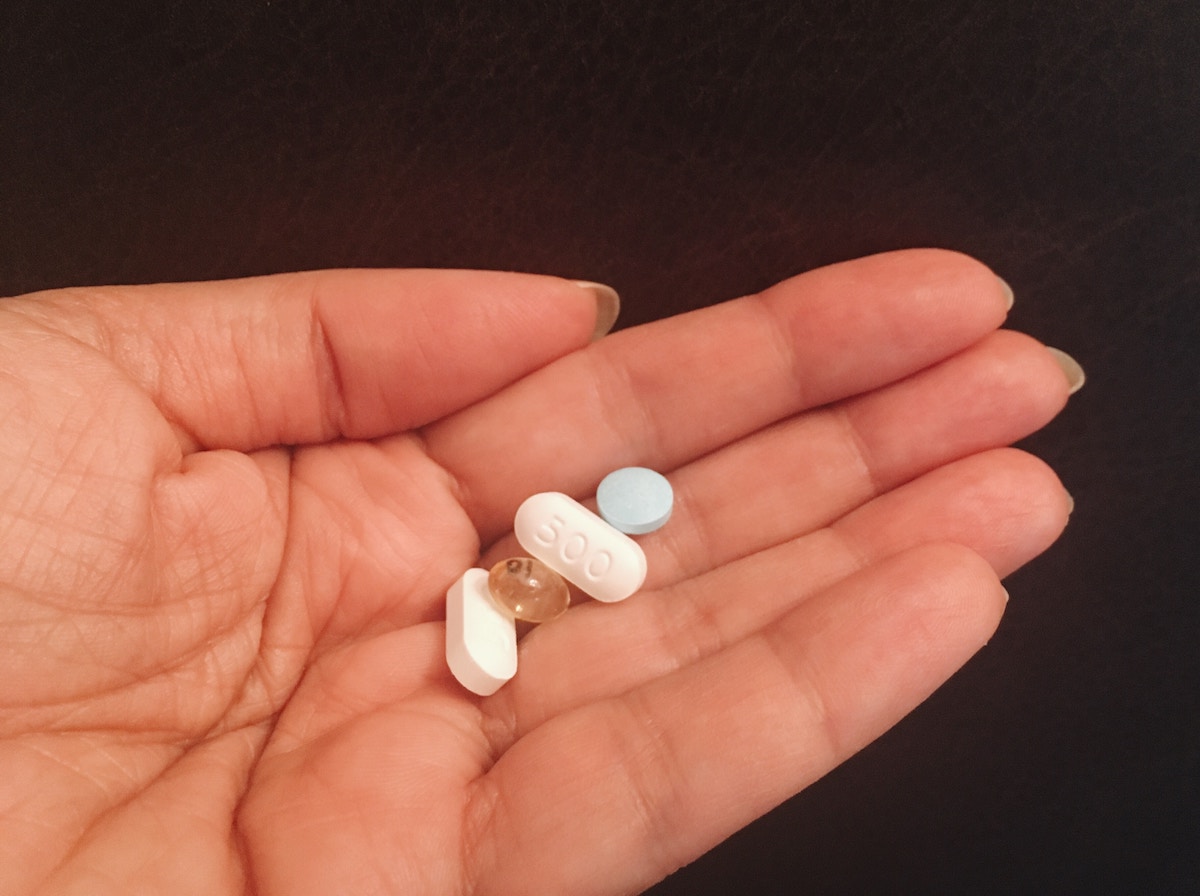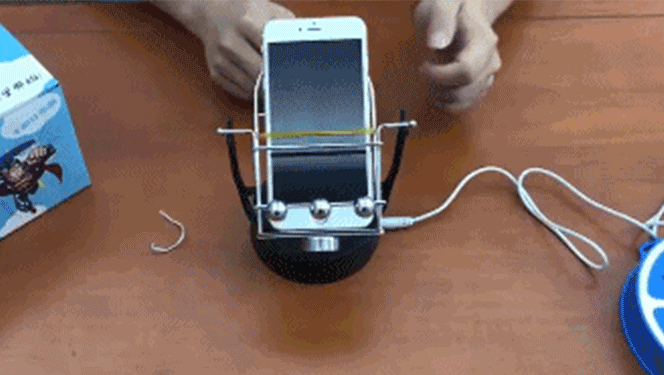Adhering to a plan of medication or supplements is important. Unconsumed medication or supplements cannot be effective. On the flip-side, overdosing (whether accidentally or intentionally) can be dangerous. For some types of medication, the importance of strict adherence will be obvious. But even in the case of supplements, adherence leads to improved health outcomes.
Contents:
- The adherence challenge
- What is a medication tracker app?
- The measurement problem
- What a pizza shop can tell us about the pitfalls of tracking
- The fallibility of tracking based on user input
- Smartpills: the panacea for adherence tracking?
- The privacy dilemma of medication tracking
- Learn more about Intrepid Pillbox

The adherence challenge
While it may be theoretically easy for everyone to agree that adherence is important, achieving adherence can be hard. A category of apps attempts to address this problem: medication trackers.
What is a medication tracker app?
Medication tracker apps, also commonly referred to as pill tracker apps, are most typically run on a smartphone so that the functionality is available to a user wherever they are. Sometimes these apps will aim to cover a wide range of health-related functionality, but at the core of the app is a tracking capability, whereby doses of medications/supplements can be scheduled and then tracked for adherence. Ideally a medication tracker app should record the amount of the consumed substance, and the time it was consumed. If a planned dose is not consumed, the app will note the missed dose. To improve adherence, medication tracker apps typically include a reminder feature as well.
There are a variety of medication-related apps available for all mobile platforms, and in theory users will enjoy improved adherence and the corresponding health benefits. Took your thyroxine at 8am? Record it. Took your afternoon antibiotics at 2.20pm? Record it. The app sends you a reminder to take your evening antibiotics dose. If you skip it because you’re busy then the app makes a note of that too. Later that night you might review the app and be confronted by the fact that you missed a dose, so you’ll know that you need to try harder to stick to your medication plan. At least that’s the idea.
The measurement problem
In a perfect world, today’s medication tracker apps will work well because they provide the user with intelligence to improve their health outcomes. But reality is not quite so straightforward. The issue is this: what precisely are these apps measuring? In a broader context the business world has been wrestling with the challenge of how to measure things effectively for some time.
To illustrate this problem, let’s consider an analogy from a completely different problem: how do you run a pizza empire efficiently?
What a pizza shop can tell us about the pitfalls of tracking (hello Goodhart’s law)
There’s a pizza shop near my home that’s part of a big chain. They have a web-based ordering system, and since they’re located near my home I always pick up the order myself instead of getting it delivered. The order page provides an estimated pickup time, so I know when to walk over.
Since they’re part of big chain, the store has some technology that you wouldn’t ordinarily find in a neighbourhood pizza shop. For instance, there’s a screen that displays the pipeline of orders. I don’t think this display is meant for customers, but the layout of the store is such that the display just happens to be visible to everyone, customers included. This screen even shows when a customer’s order is ready to be picked up. Presumably this is so that the staff can tell at a glance whether or not someone’s order is ready, to avoid having to scan the pass every time a customer comes in to pick up their order.
One evening I place my order, make a note of the pickup time, and walk to the store arriving about 2 minutes after the estimated collection time. I glance at the screen, and it says my order is ready, great! But then I ask about it at the counter, and I’m told I need to wait. How weird.
More customers stream in and they’re told they need to wait, with confused glances at the screen that says their orders are also ready. Then, one of the staff walks up to a computer terminal, and a few taps and swipes later my name is off the screen and more orders are marked as ready for collection. All the while the staff are frantically trying to complete orders. It looks like chaos.
Then it hit me.
When I placed the order online, a record was made of what I ordered and what time the order was placed, and an estimate of how long it should take to produce my order was also recorded. Over in the local shop where my pizza was to be made, the staff have to mark the progress of each order, or at least, mark when an order is ready for collection. The system may have been designed with the intent of tracking which stores require more help with getting orders out in time, but the effect is the staff believe (rightly or wrongly) that their performance was being monitored, and so they mark orders as ready even if they’re not. This has the unfortunate result that pizza HQ is blind to the fact that the store is struggling to keep up with orders during peak hour, customers have to wait, and the staff suffer with an ever-growing backlog. It’s a lose-lose-lose situation.
Pizza HQ may think they’re measuring pizza production throughput or customer wait times, but really what they’re measuring are taps and swipes on a screen. This is a classic example of Goodhart’s law.

The fallibility of tracking based on user input
Medication tracker apps that rely on user input suffer this same pitfall. The UI may be streamlined to make data entry a relatively painless experience, but no matter how good the UI, this approach to tracking adherence is fundamentally flawed. Although the intent is to track if/when a user takes a particular dose of medication, what happens in reality will tend to be entirely different.
Erroneous entries
If prompts for data entry are overly persistent, or naggy, most users will switch the feature off, or worse simply respond with the affirmative whether or not they took their medication (”I’ll take it in a few minutes I just need to finish up this email first”). If prompts are easy to ignore, then users will tend to ignore them.
Imprecise entries
Precision will also be lacking: what if someone takes their medication shortly before the app prompts them to? Then the recorded time will be off. Apps that try to apply advanced analysis techniques to interpolate between sample points have the intractable task of accounting for per-user sampling bias and defending the accuracy of their predictive models.
Measuring the wrong thing
The overarching question is, do medication tracker apps measure the right thing?
Let’s go back to the pizza shop. What did Pizza HQ really want to know? What do they really care about? We can guess that what matters most to them is that customers aren’t waiting much beyond the expected pickup time. What are some ways they could have measured that?
Perhaps they could have counted the number of people in the waiting area (video analysis is amazing these days, and inexpensive). Though the problem with that is it cannot distinguish between customers who arrived just in time and customers who arrived far too early. Perhaps we could attach sensors to the pizzas so we know when they’re done? I’m guessing most customers would prefer not to have a side order of extra crispy RFID chips to go with their pizza.
Perhaps there isn’t an easy solution for pizza shops, but there is a fascinating alternative emerging for the domain of medical adherence.
Look out step counters, here comes automation!

In order to boost fitness, China's Guangdong University of Foreign Studies has a step count mandate for students. Some financial services also offer vouchers to customers who hit a step count target.
Have initiatives such as these resulted in increased levels of fitness activity? Maybe. But it has also created a market for artificial step count booster gadgets. Though they may be well-intentioned, when fitness advocates try to "hack" adherence by creating artificial motivation, they should not be surprised when users (and creative Taobao entrepreneurs) "hack" back.
Smartpills: the panacea for adherence tracking?
The idea of something that you eat sending an electronic signal out to the internet may sound like IoT science fiction, but not only do digital sensor-equipped medication pills exist, they are FDA approved.
The Proteus solution relies on a patch worn on the skin of the user. Their digital pills contain a sensor that is activated by gastric juices, and it sends an electrical signal to the patch, which can communicate with other devices (such as smartphones) via Bluetooth.
Since the sensor is triggered by gastric juices, there is no trivial way to artificially induce a measurement. At least not until some entrepreneurs come up with a machine that can fake gastric juices and have the right material signature to transmit the electrical signal to the patch meant to be worn on the body. Therefore, for now at least, smartpills can do a very good job of tracking medication adherence. And for users who don’t intend to cheat, they will work very well because all the user has to do to record that they took some medication, is to simply take the medication. There is no additional data entry step. Hence from the user’s perspective the tracking problem does not exist, it’s simply a by-product of consuming their medication. One less task to be done.
The privacy dilemma of medication tracking
Although smartpills addresses the first-order problem of data accuracy, the availability of reliable adherence data opens up a second-order problem: who has access to that data, and how will it be used? The psychiatric community in particular is worried about how such capabilities, when applied to psychosis treatment, might produce data that can be punitively used against patients.
“Asking many patients to let us track what they take and don’t take is not an innocuous intervention” - Paul S. Appelbaum, M.D., Former President of the American Psychiatric Association
This fear was expressed in the context of smartpills, but the implications for medication tracker apps are the same. If medication tracker apps are as effective at tracking adherence as smartpills, they will have to wrestle with the same ethical dilemma.
Learn more about Intrepid Pillbox
For the reasons described above, the philosophy of Intrepid Pillbox is that tracking adherence by relying on user input is not likely to be a successful strategy for most people. Therefore, for now at least, medication tracking functionality is not provided. Issuing dosage reminders, however, is something that a mobile app can do well, so that’s where Intrepid Pillbox tries to help with supplements adherence.
